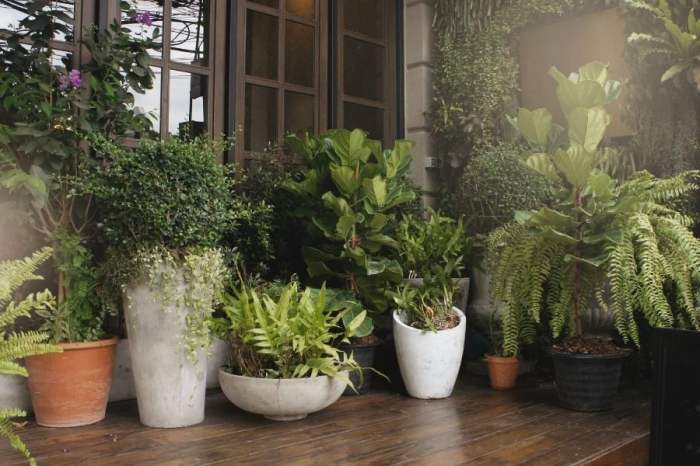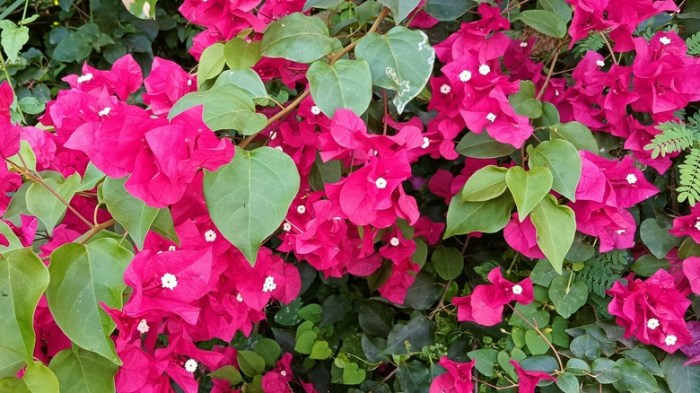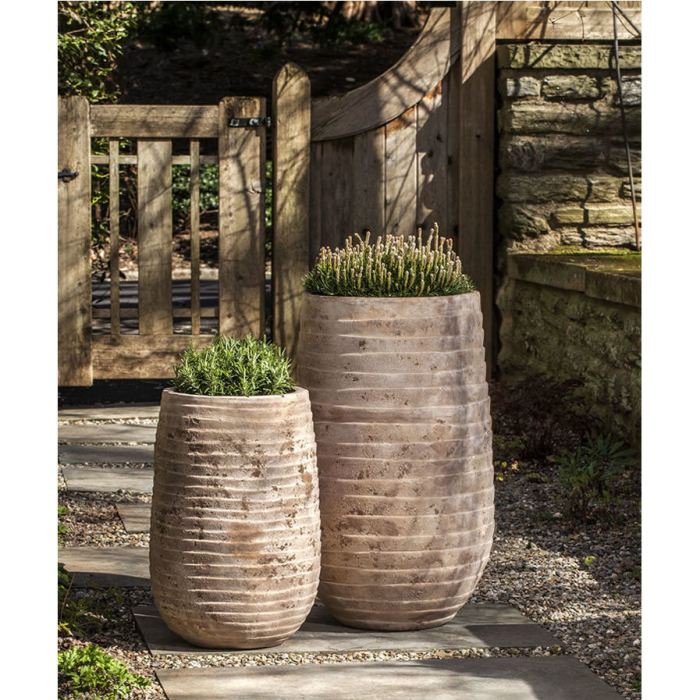Soil and Planting Mediums for 10-Inch Pots

10 in plant pot – Choosing the right soil mix for your plants in 10-inch pots issuper* important, bro. It’s like choosing the right foundation for a building – get it wrong, and everything crumbles. A well-draining, nutrient-rich mix ensures your plants thrive and avoids those pesky root rot issues. Think of it as giving your plants the ultimate Makassar street food experience – the perfect blend of flavors and textures!The ideal soil composition for a 10-inch pot balances drainage with water retention and nutrient availability.
Too much clay, and your plants drown; too much sand, and they dry out faster than a gossip in the pasar. The goal is a happy medium, ensuring the roots get enough air and water to flourish. A good mix will allow excess water to drain freely, preventing waterlogging which can lead to root rot and fungal diseases.
This is especially important in larger pots where more water is retained.
Ideal Soil Composition and Drainage
A well-draining potting mix for a 10-inch pot typically consists of a blend of components. A common ratio is 1 part peat moss (or coco coir as a sustainable alternative), 1 part perlite or vermiculite (for drainage and aeration), and 1 part compost (for nutrients). This provides a balance of moisture retention, drainage, and nutrient richness. Adjusting the ratios depending on the specific plant’s needs is crucial.
For instance, succulents and cacti prefer a more gritty mix with less peat moss, while moisture-loving plants might benefit from a slightly higher proportion of peat moss or coco coir. The size of the pot also influences the drainage requirements; larger pots, like 10-inch ones, require better drainage to prevent waterlogging.
Potting Mix Recipes
Here are a couple of recipes for creating a well-draining potting mix suitable for 10-inch pots:* Recipe 1 (General Purpose): 1 part peat moss, 1 part perlite, 1 part compost. This is a versatile mix suitable for many plants.
Recipe 2 (For Succulents/Cacti)
2 parts coarse sand or pumice, 1 part potting soil, 1 part perlite. This mix provides excellent drainage crucial for drought-tolerant plants.
Recipe 3 (For Moisture-Loving Plants)
Having 10 plants in one pot presents a unique challenge, requiring careful consideration of plant size and root systems. Successfully achieving a thriving arrangement hinges on proper planting techniques, which you can learn more about by checking out this guide on how to plant flowers in a pot. Mastering these techniques ensures your 10 plants have ample space and nutrients, leading to a vibrant and healthy display.
Remember, proper planting is key to success with densely populated pots.
2 parts peat moss, 1 part perlite, 1 part compost. This provides better water retention compared to the general purpose mix.Remember to always use high-quality components to ensure optimal plant growth. Avoid using garden soil directly in pots, as it tends to compact and impede drainage.
Impact of Different Soil Types on Plant Growth
Different soil types significantly impact plant growth within a 10-inch container. Clay soils, while retaining moisture well, can become compacted, restricting root growth and oxygen uptake. Sandy soils drain too quickly, leading to frequent watering and potential nutrient deficiencies. A well-balanced potting mix, as described above, avoids these extremes. The right mix promotes healthy root development, nutrient absorption, and overall plant vigor.
Imagine the difference between trying to grow a mango tree in pure sand versus a rich, well-draining mix – one will struggle, the other will flourish!
Benefits and Drawbacks of Various Potting Mixes
The choice of potting mix significantly affects plant health. Here’s a breakdown:
- Peat Moss: Excellent water retention, but can become hydrophobic if overwatered and can be environmentally unsustainable.
- Coco Coir: Sustainable alternative to peat moss, good water retention and aeration, but can be slightly more expensive.
- Perlite: Improves drainage and aeration, lightweight, but offers no nutrients.
- Vermiculite: Similar to perlite, but retains more moisture.
- Compost: Adds nutrients, improves soil structure, but can contain weed seeds if not properly composted.
- Sand: Improves drainage, but offers no nutrients and can be harsh on some plant roots.
Choosing the right mix is all about understanding your plant’s needs and the properties of different soil components. It’s a balancing act, but getting it right is key to a flourishing garden!
Watering and Plant Care in 10-Inch Pots: 10 In Plant Pot

Maintaining healthy plants in 10-inch pots requires understanding their specific needs. This involves a balanced approach to watering, fertilization, and occasional repotting, all tailored to the plant’s type and the surrounding environment. Ignoring these aspects can lead to stunted growth or even plant death, so let’s get into the details, Makassar style!
Watering Schedules for 10-Inch Pots
The ideal watering schedule varies significantly depending on several factors. Plant type plays a crucial role; succulents, for instance, need much less frequent watering than thirsty ferns. The season also matters; during hot, dry summers, plants in 10-inch pots may require daily watering, while in cooler, wetter seasons, watering might only be necessary once or twice a week. Finally, climate significantly influences watering needs; a humid tropical climate will necessitate more frequent watering compared to a dry desert climate.
Always check the soil moisture before watering; stick your finger a couple of inches into the soil – if it feels dry, it’s time to water. Overwatering is just as harmful as underwatering, so pay attention!
Signs of Underwatered and Overwatered Plants
Underwatering manifests as wilting leaves, dry soil, and stunted growth. The soil will be noticeably dry and crumbly to the touch. Overwatering, on the other hand, leads to yellowing leaves, soggy soil, and potentially root rot. The soil will be saturated and may even smell foul. Solutions for underwatering involve thorough, deep watering until water drains from the drainage holes.
For overwatering, reduce watering frequency, improve drainage (perhaps by adding perlite to the soil mix), and ensure adequate airflow around the plant to prevent fungal growth.
Fertilizing Plants in 10-Inch Pots
Fertilizing provides essential nutrients for healthy growth. The type and frequency of fertilization depend on the plant’s needs and the growing season. Slow-release granular fertilizers are convenient for consistent nutrient supply, while liquid fertilizers offer more immediate results but require more frequent application. Always follow the instructions on the fertilizer packaging, as over-fertilizing can damage the plant’s roots.
For example, a flowering plant might benefit from a high-phosphorus fertilizer during its blooming period, while a leafy green plant might prefer a balanced NPK (Nitrogen, Phosphorus, Potassium) ratio fertilizer.
Repotting a Plant into a 10-Inch Pot, 10 in plant pot
Repotting is essential when a plant outgrows its current container. Here’s a step-by-step guide:
- Gently remove the plant from its current pot, loosening the root ball if necessary.
- Inspect the roots for any signs of damage or rot; trim away any dead or diseased roots.
- Place a layer of fresh potting mix in the bottom of the 10-inch pot.
- Position the plant in the center of the pot, ensuring the top of the root ball is level with the rim of the pot.
- Fill the remaining space with potting mix, gently firming it around the base of the plant.
- Water thoroughly to settle the soil and help the plant establish itself in its new home.
Remember to choose a potting mix appropriate for the plant’s type and ensure the 10-inch pot has adequate drainage holes. A well-draining potting mix prevents waterlogging, a common cause of root rot.
Answers to Common Questions
What types of plants are unsuitable for 10-inch pots?
Very large, fast-growing plants or those with extensive root systems might outgrow a 10-inch pot quickly, requiring frequent repotting.
How often should I fertilize plants in 10-inch pots?
Frequency depends on the plant and fertilizer type, but generally, a balanced liquid fertilizer every 2-4 weeks during the growing season is a good starting point. Always follow the fertilizer instructions.
What are the signs of rootbound plants in a 10-inch pot?
Roots circling the bottom of the pot, stunted growth despite adequate care, and difficulty watering are all signs of rootbound plants. Repotting into a larger container is necessary.
Can I use 10-inch pots outdoors year-round?
It depends on your climate and the plant’s hardiness. In colder climates, you’ll likely need to bring them indoors during winter or provide winter protection.










